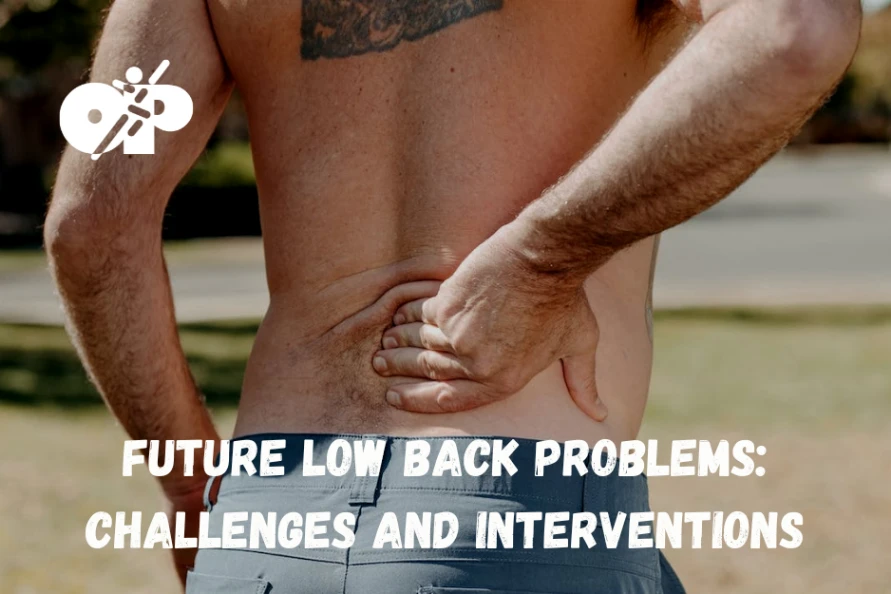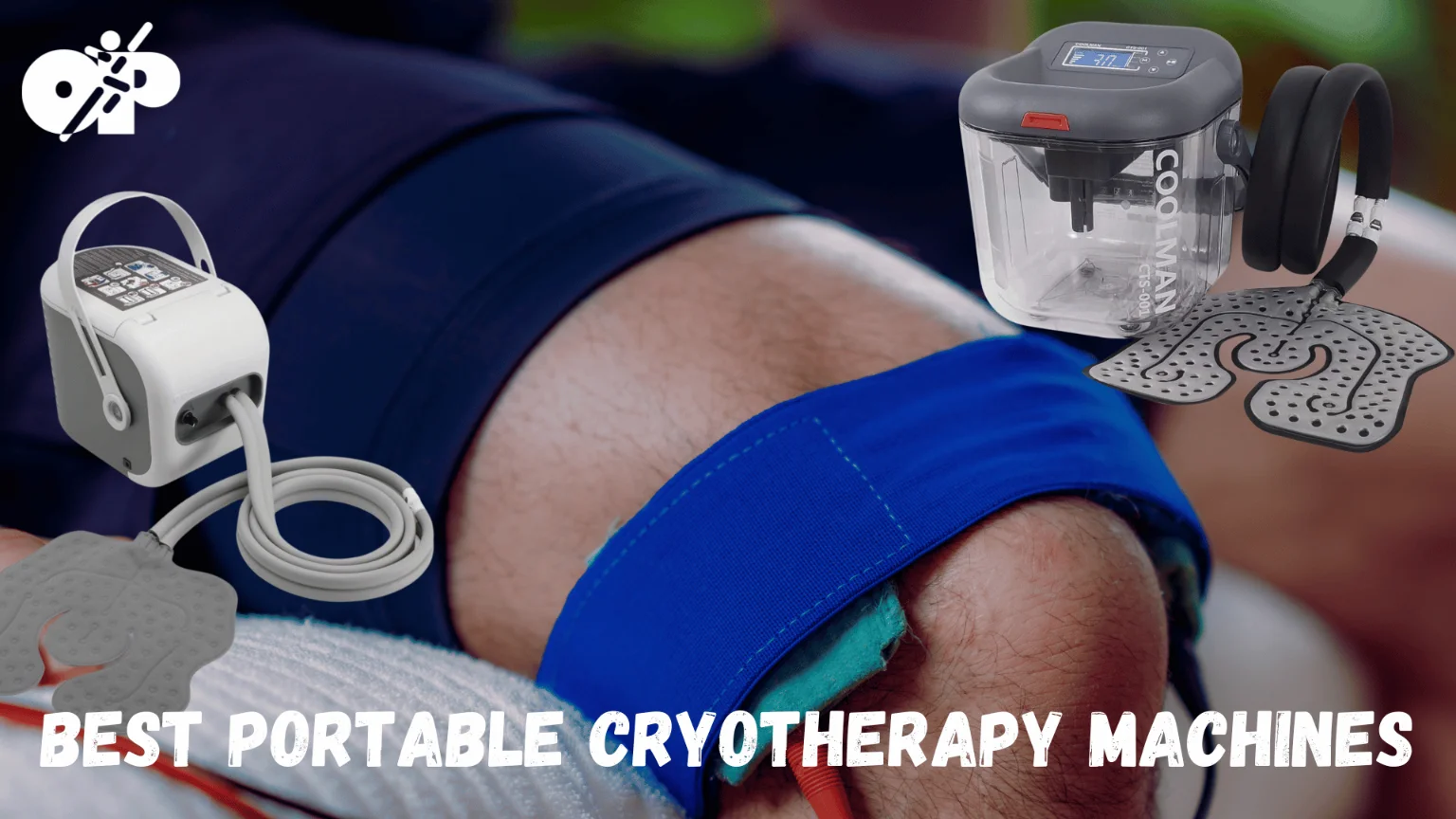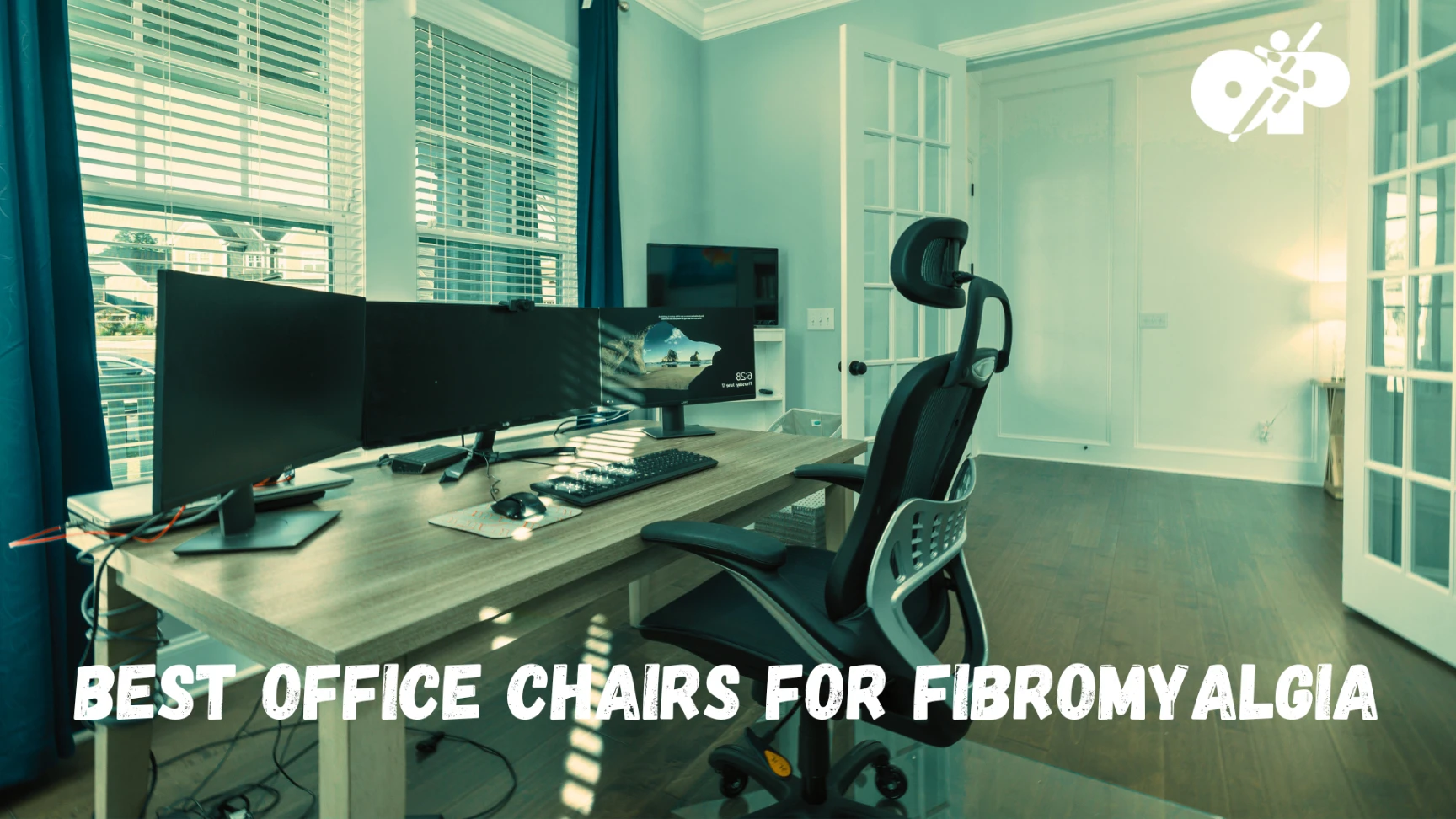Low back problems are a significant public health concern worldwide, creating a major impact on society due to their implications for quality of life and healthcare expenditure. Pain and disability associated with low back problems span various ages and demographics, causing distress for individuals, loss of work productivity, and a substantial financial burden on healthcare systems. Despite decades of research and interventions, the prevalence of low back problems has not seen a significant decrease, emphasizing the necessity for novel approaches to tackle this issue.
Understanding the future of low back problems is critical for various reasons. One significant reason is the projected increase in life expectancy, which is likely to lead to a rise in the incidence of age-related diseases, including degenerative spinal conditions causing low back pain. In addition, changing work environments, such as the increasing prevalence of sedentary jobs and work-from-home arrangements, can influence the onset and progression of these conditions. Furthermore, low back problems are often chronic in nature, and the associated discomfort can lead to a decrease in physical activity and overall well-being, making it a public health priority to address this issue.
This article aims to provide an in-depth overview of the latest innovations and interventions that promise to shape the future of low back problems. We will delve into advances in diagnostic techniques, therapeutic strategies, and prevention methods to present a holistic view of this evolving landscape. This includes examining how digital health technology, artificial intelligence, and personalized medicine are driving the revolution in the management of low back problems. We will also look at novel surgical and non-surgical interventions, and the role of lifestyle modifications and workplace ergonomics in preventing these issues.
The purpose of this article is not only to share scientific advancements but also to provide actionable insights for healthcare providers, patients, policymakers, and employers alike. By understanding the trends and anticipating the future of low back problems, we can create more effective strategies to mitigate the physical, psychological, and economic burden of this pervasive health concern. It is hoped that by leveraging the discussed innovations and interventions, we can turn the tide and usher in a new era of better management and prevention of low back problems.
The Scope of Low Back Problems
Low back problems represent a widespread issue that affects people on a global scale. According to the World Health Organization, about 60-70% of individuals in industrialized countries experience low back pain at some point in their lives, making it one of the most prevalent musculoskeletal conditions worldwide. Globally, low back pain is estimated to affect 540 million people at any given time, further highlighting its universality.
These numbers are not random or isolated incidents, but rather the tip of an iceberg that signifies a larger, underlying issue. The burden of low back problems extends far beyond individual health, seeping into various other aspects of life and society. They are frequently linked to significant disability, hindering personal mobility and compromising the quality of life of those affected.
The demographic most affected by low back problems traditionally includes individuals aged between 40 and 80 years, with a peak around the fifth decade of life. However, we’ve been witnessing a gradual yet concerning shift towards younger populations. With the rise of technology-related jobs and sedentary lifestyles, low back problems are increasingly being reported among young adults and even adolescents. Such changes underscore the urgency of addressing these issues in a timely manner.
The financial implications of low back problems are monumental. Direct costs involve medical expenditures, including hospital stays, physician visits, diagnostic tests, medications, and physical therapy, among others. However, these are only part of the picture. The indirect costs are also significant, encompassing lost productivity due to absenteeism, disability pensions, and early retirement. It’s estimated that in the U.S. alone, the total cost related to low back pain exceeds $100 billion annually, underscoring the significant economic burden of this issue.
The societal costs are just as important, albeit harder to quantify. Low back problems can lead to a decreased ability to perform daily activities, take care of children, or participate in social activities. It’s not uncommon for individuals suffering from chronic low back pain to experience depression, anxiety, and other mental health problems, adding another layer of complexity to an already complicated issue.
Furthermore, low back problems contribute to an increased reliance on healthcare resources. Frequent doctor visits, recurrent hospital admissions, and long-term use of medications are common among people suffering from these conditions. This not only puts a strain on healthcare systems but also risks diverting resources from other health conditions that also require attention and care.
Current Approaches and Limitations
The modern therapeutic landscape for low back problems is diverse, encompassing a variety of interventions ranging from conservative treatments like physical therapy and medication to more invasive approaches such as surgery.
Physical therapy is often the first line of treatment for low back problems. It involves a variety of exercises aimed at strengthening the back and abdominal muscles, improving posture, and increasing flexibility. Techniques such as massage, heat and cold therapies, ultrasound, and electrical stimulation might also be employed. Physical therapy not only helps alleviate pain but also facilitates recovery and prevents recurrent episodes.
Medications are another widely used option. These include over-the-counter drugs such as nonsteroidal anti-inflammatory drugs (NSAIDs) and acetaminophen, muscle relaxants, and opioids. In some cases, corticosteroid injections are administered for more immediate relief. Medications can provide significant temporary relief but rarely address the root cause of low back pain.
In more severe cases or when conservative treatments fail, surgical options are explored. Discectomy, laminectomy, spinal fusion, and artificial disc replacement are some common procedures. The goal of these surgeries is to alleviate pain by addressing the underlying structural issues in the spine.
Despite the availability of these interventions, there are several limitations that often stand in the way of successful treatment.
Cost is a significant barrier. While some treatments like over-the-counter medications may be relatively affordable, others like physical therapy and particularly surgery can be extremely expensive. Insurance coverage varies widely, and many patients find themselves burdened with substantial out-of-pocket costs.
Access is another major issue. Patients in rural or underserved areas may have difficulty accessing quality healthcare services. They might have to travel long distances for specialist appointments or physical therapy sessions, adding to the burden of the condition. Additionally, disparities in healthcare often mean that certain demographic groups have lesser access to quality care, which can lead to poor outcomes.
Efficacy of treatments is yet another concern. For many patients, current interventions do not provide long-lasting relief. Medications may alleviate symptoms temporarily, but they do not target the root cause of the problem. Physical therapy has shown success in many cases, but its effectiveness often depends on the patient’s commitment to the exercise regimen. Surgeries, while often effective, come with their own set of risks and may not always result in significant pain reduction or improved functionality.
Side-effects associated with the treatments, particularly medications and surgery, pose additional challenges. NSAIDs can cause stomach ulcers, liver problems, and increased risk of heart complications, while long-term use of opioids can lead to addiction. Surgeries are associated with risks such as infection, nerve damage, and, in some cases, can even lead to increased pain post-procedure.
It is also important to mention the psychological implications of low back problems that are often overlooked in the current approach. Chronic low back pain can lead to psychological distress, depression, and anxiety. However, the biopsychosocial aspect of pain management is often inadequately addressed in the current healthcare model.
Additionally, it’s worth noting that our understanding of low back problems is still incomplete. The complexity of the spine and the diverse potential causes of back pain make diagnosis and treatment challenging. In many cases, the exact cause of the pain remains unknown, making it difficult to develop a targeted treatment plan.
Advances in Research
The scientific community has been actively exploring novel avenues for understanding and treating low back problems. Three promising fields of research – regenerative medicine, genomics, and biomechanics – have begun to provide fresh perspectives and potential solutions.
Regenerative medicine is a revolutionary area of research that offers exciting possibilities for the treatment of low back problems. This field primarily involves the use of stem cells and tissue engineering to restore damaged or degenerated tissues. In the context of low back pain, this typically involves repairing or regenerating intervertebral discs, the soft, cushioning structures found between the vertebrae of the spine.
Disc degeneration is a major cause of chronic low back pain, and the capacity to restore these structures could revolutionize the way we approach these conditions. Early studies have shown that injecting stem cells into the degenerated discs could potentially rejuvenate the disc tissue and alleviate the pain. While still in early stages, these therapies hold significant promise for providing a long-term solution for chronic low back pain, reducing the need for invasive surgeries and long-term medication use.
Genomics, the study of an individual’s genes, is another promising area of research. Various studies suggest that susceptibility to low back pain may have a genetic component. A deeper understanding of the genes and genetic variants involved in low back pain could potentially lead to more personalized and effective treatment strategies.
In the future, we may be able to identify individuals at a higher risk of developing low back pain based on their genetic profile and intervene proactively. Additionally, genomics could help us understand why some people respond better to certain treatments than others, allowing for more personalized treatment plans. This kind of precision medicine could drastically improve the efficacy of treatment and management strategies for low back problems.
Biomechanics, the study of the mechanical laws relating to the movement or structure of living organisms, has also brought important insights into the understanding of low back problems. By studying the biomechanics of the spine, researchers have been able to develop more advanced spinal models, leading to improved surgical techniques and the development of more effective and ergonomic support devices.
Research into spinal biomechanics is also helping us understand how lifestyle factors, such as sitting for extended periods or heavy lifting, can impact the spine’s structure and function and contribute to low back pain. This research can inform preventative strategies, leading to recommendations for workplace ergonomics and lifestyle modifications that can help prevent low back problems in the first place.
Each of these areas of research carries the potential to significantly impact future treatment approaches. Regenerative medicine could shift the focus from managing symptoms to actually restoring damaged tissue, potentially providing a cure for some forms of chronic low back pain. Genomic research could lead to more targeted, personalized treatment plans, increasing the efficacy of interventions. Biomechanical research, on the other hand, can help us develop better preventative strategies and surgical techniques.
However, while the promise of these research areas is immense, it’s important to remember that the results from initial studies need to be validated through larger, more comprehensive trials. Regulatory approval and cost-effectiveness are other crucial considerations before these therapies can be incorporated into mainstream clinical practice.
Role of PT
As we move into the future, the role of physiotherapists in managing low back problems is likely to evolve and expand. Here are some ways in which physiotherapists will contribute to this area:
Incorporating Advanced Treatment Modalities
Advances in regenerative medicine and genomics will likely bring new treatment modalities to the fore. Physiotherapists will need to familiarize themselves with these advancements and incorporate them into their practice. For instance, physiotherapists might work in conjunction with medical specialists to provide rehabilitation following stem cell therapy or to implement exercise regimens tailored to a patient’s genetic profile.
Personalized Therapy Plans
With the help of advancements in genomics and precision medicine, physiotherapists will be able to design more personalized therapy plans. They will be able to understand why some patients respond differently to the same treatment and adjust their approaches accordingly.
Emphasis on Prevention and Education
Physiotherapists will continue to play a pivotal role in preventing low back problems. This includes providing advice on correct posture, ergonomic practices, exercises for strengthening back and core muscles, and lifestyle modifications. Their role in patient education will be more crucial than ever, helping patients understand their conditions, the importance of adherence to therapy, and preventive measures.
Incorporating Technology into Practice
Future physiotherapy will see an increasing use of technology. This could include using virtual reality for pain management, tele-rehabilitation for remote treatment sessions, wearable devices for monitoring patient progress, and AI-driven tools for diagnosis and treatment planning.
Advocacy and Research
Physiotherapists will continue to play an important role in research, contributing to the evidence base for new and existing treatments. They will also need to advocate for their patients, ensuring they have access to the best and most appropriate care, and contributing to policy discussions about back pain management.
Addressing Biopsychosocial Aspects of Pain
Physiotherapists will increasingly need to address the psychological and social aspects of chronic low back pain, in addition to the physical aspects. This could involve incorporating techniques to manage stress and anxiety, providing counseling, and referring patients to other specialists when necessary.
The future of physiotherapy in the management of low back problems is indeed promising, with the profession poised to embrace technological advancements, innovative treatments, and a more holistic approach to patient care. It will require continuous learning and adaptation, but the potential to improve patient outcomes and quality of life is immense.
The Role of Prevention
Prevention plays a fundamental role in managing low back problems. As the saying goes, “An ounce of prevention is worth a pound of cure,” and this could not be more relevant when it comes to low back problems. By implementing effective preventive measures, we can potentially reduce the onset, recurrence, and severity of these issues, consequently lessening their overall burden on individuals and society.
Workplace ergonomics is a key component of these preventive strategies. A considerable proportion of low back problems can be attributed to prolonged sitting or standing, improper lifting techniques, and generally poor postures maintained at work. Employers and employees alike need to understand the significance of ergonomics in preventing low back issues. This could mean adjusting workstation setups, using ergonomic chairs or standing desks, and taking regular breaks to move around and stretch. Employers can also offer training sessions to educate employees about proper body mechanics when lifting heavy objects to prevent back injuries.
Fitness and regular physical activity play a crucial role in maintaining a healthy back. Exercises that strengthen the core muscles can provide more support to the back, reducing the likelihood of pain and injury. Incorporating regular physical activity into daily routines is beneficial not only for preventing low back problems but also for general health. Encouraging active modes of commuting like walking or cycling, promoting sports and physical activities in schools, and setting up public spaces for physical activities can go a long way in fostering a healthier population.
Lifestyle changes, such as maintaining a healthy weight and quitting smoking, also have a significant impact on the health of our backs. Excess weight, particularly around the waist, exerts additional strain on the lower back, increasing the risk of back problems. Smoking, on the other hand, reduces blood flow to the lower spine and can lead to degeneration of the spinal discs. Adopting a healthy diet and quitting smoking are thus essential steps in preventing low back problems.
Public health initiatives and education have a significant role to play in preventing low back problems. Large-scale campaigns can raise awareness about the risk factors for low back pain and promote healthy behaviors. These initiatives can also address misconceptions about low back pain and guide people to seek appropriate help. Public health policies can facilitate access to preventive care, including physical therapy and ergonomic assessments, and encourage health-promoting behaviors in schools, workplaces, and communities.
The role of education in prevention cannot be understated. Well-informed individuals are more likely to take proactive measures to prevent low back problems. This can range from learning about the correct posture to maintaining while sitting and standing, to understanding the importance of regular physical activity and its role in maintaining back health. Schools, community centers, and healthcare providers all have a crucial role to play in imparting this education.
Recommended for you:
- How to Start Walking After a Broken Ankle? Therapy Guide
- Anatomy of Pain – Understanding Hamstring and Groin Pain
- Hip Pain When Squatting – Causes, solutions and techniques
Challenges and Solutions
Low back problems pose significant challenges on a global scale, affecting individuals’ quality of life and burdening healthcare systems. While current treatments such as physical therapy, medication, and surgery offer some respite, they are often hindered by limitations like high costs, variable efficacy, potential side-effects, and issues of access.
Promising advances in regenerative medicine, genomics, and biomechanics offer new hope. The potential for stem cells to regenerate damaged tissues, the identification of genetic factors contributing to low back pain, and a better understanding of spine biomechanics could significantly transform our approach to managing these issues. However, it’s important that we cautiously navigate these advances, ensuring rigorous testing, and consideration of cost-effectiveness and regulatory aspects.
Meanwhile, prevention remains a crucial and powerful tool in our arsenal. Workplace ergonomics, fitness, lifestyle changes, public health initiatives, and education can play significant roles in preventing the onset and recurrence of low back problems. An emphasis on prevention not only reduces the burden of low back issues but also promotes overall health and well-being.
Looking ahead, these developments and approaches will undoubtedly influence the field of physiotherapy. The integration of novel treatments stemming from regenerative medicine and a more personalized approach based on genomics could significantly enhance the therapeutic toolbox available to physiotherapists. At the same time, physiotherapists will continue to play a vital role in preventive measures, from advising on workplace ergonomics to guiding patients through targeted exercise regimens.
This transition towards a future of innovative treatments and a stronger focus on prevention will require embracing new technologies, continuing research, and fostering education and awareness. As researchers, healthcare professionals, policymakers, and as a society, we must be willing to adapt and adopt these advancements while maintaining an unwavering focus on patient-centered care.
Low Back Problems – Conclusion
In conclusion, we stand on the brink of an exciting new era in the management of low back problems. Our ability to effectively navigate this future will depend on our continued commitment to research, our willingness to embrace technology and innovation, and the prioritization of preventive measures. By doing so, we have the potential to significantly improve the lives of those affected by low back problems and reduce the overall burden of these conditions on our society.





